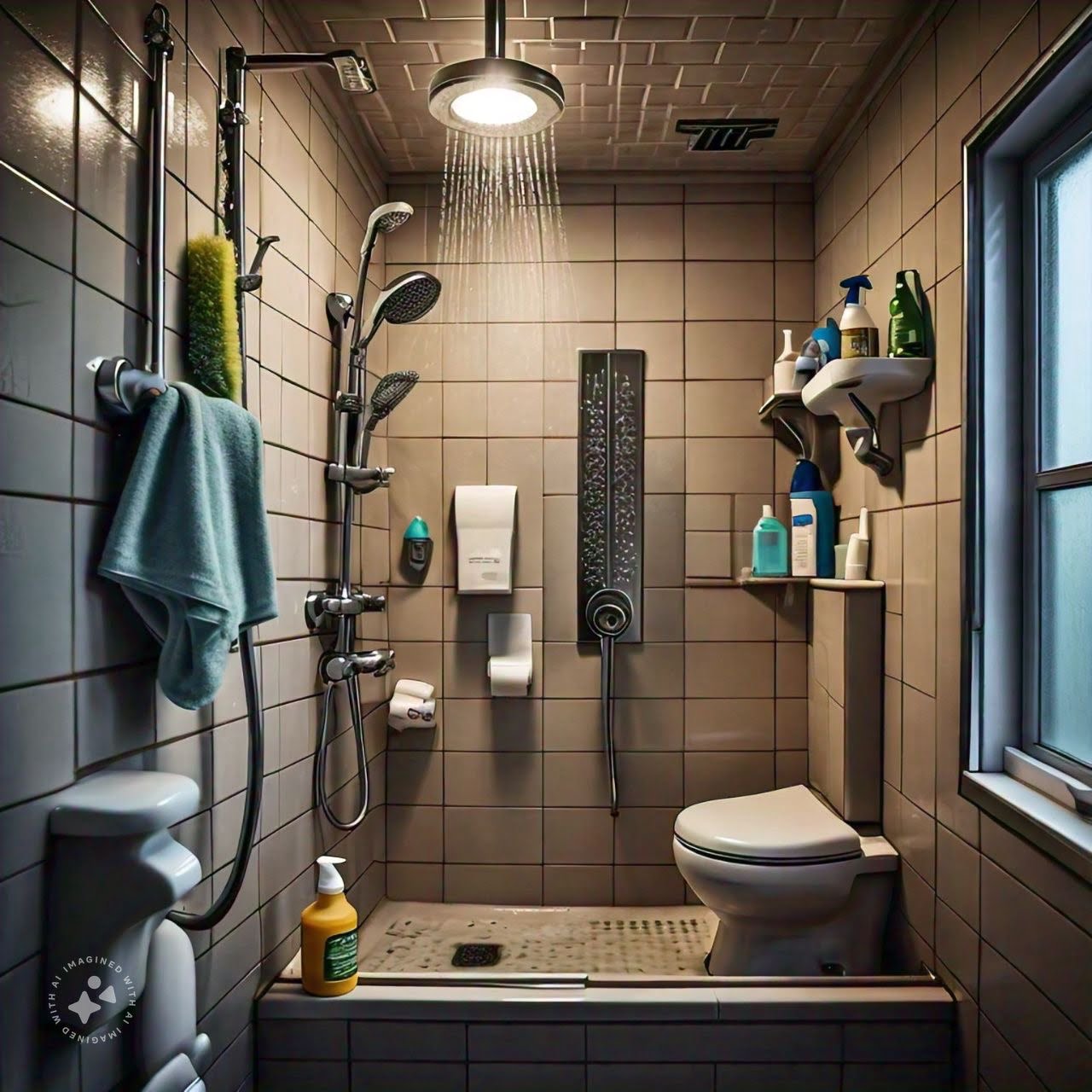Converting a bathtub into a shower is an excellent way to modernize your bathroom and make it more functional. However, maintaining your new shower requires attention to ensure it remains in optimal condition over time. We will explore several effective strategies for keeping your newly installed shower in top shape, from routine cleaning to checking for wear and tear. By implementing these practices, you can extend the lifespan of your shower and enjoy its benefits for years to come.
Regular Cleaning and Care
Establishing a regular cleaning routine is one of the most critical aspects of maintaining your new shower. To prevent soap scum, mildew, and grime buildup, it’s essential to clean the shower surfaces frequently. Use non-abrasive cleaners specifically formulated for the type of material used in your shower. For instance, if your shower has glass doors, a glass cleaner or a mixture of water and vinegar can help keep them streak-free. A mild detergent and a soft sponge are typically sufficient for tile or fiberglass surfaces. Regular cleaning helps prevent mold and mildew, which can develop in the damp environment of a shower. Additionally, ensuring that all cleaning products are thoroughly rinsed away can avoid buildup residue that may affect the appearance and functionality of your shower.
Inspecting and Maintaining Fixtures
In addition to regular cleaning, it is essential to regularly inspect the fixtures in your shower to ensure they are functioning correctly. This includes checking the showerhead, faucet handles, and any other components. Look for signs of wear, such as leaks, reduced water pressure, or drips. A leaky faucet or showerhead can lead to increased water bills and potential water damage. Tighten any loose fixtures and replace worn-out washers or seals to prevent leaks. It’s also a good idea to periodically descale the showerhead to remove mineral deposits, which can affect water flow. By addressing these issues promptly, you can avoid more significant repairs and maintain the efficiency and effectiveness of your shower system.
Addressing Mold and Mildew Issues
Mold and mildew are common issues in showers due to the constant exposure to moisture. To prevent these problems, ensure proper ventilation in your bathroom. Install an exhaust fan if one is not already in place, and use it during and after showers to reduce humidity. Consider using a mildew-resistant shower curtain or liner if your shower setup includes one. Regularly check and clean the grout lines between tiles, as these areas can be prone to mold growth. Clean the affected areas with bleach and water or a commercial mold remover if you notice any mold or mildew. Addressing these issues promptly will help maintain a healthy and clean environment in your shower.
Preventing Hard Water Damage
Hard water can cause mineral buildup on shower surfaces and fixtures, leading to stains and decreased efficiency. To combat this issue, consider installing a water softener if you live in an area with hard water. A water softener reduces the mineral content in the water, which helps prevent scale buildup and prolongs the life of your shower components. Additionally, regularly wipe down your shower surfaces with a squeegee or towel after each use to remove excess water and prevent mineral deposits from forming. For existing buildup, use a commercial descaling product or a mixture of vinegar and baking soda to clean the affected areas. Taking these steps can help keep your shower looking clean and functioning properly.
Checking for Water Damage
Regularly check for signs of water damage in and around your shower area. Look for any water stains on the ceiling or walls, indicating leaks or poor sealing. Examine the caulking around the shower edges, as damaged or deteriorated caulk can lead to leaks and water damage. Reapply caulk as needed to ensure a watertight seal. If you notice any signs of water damage, such as peeling paint or soft spots in the drywall, address these issues promptly to prevent further damage and potential mold growth. Keeping an eye on these indicators will help you maintain the structural integrity of your bathroom and ensure your shower remains in good condition.
Maintaining your new shower after a bathtub conversion through Baths R Us near Pittsburgh involves regular cleaning, inspecting fixtures, addressing mold and mildew, and preventing hard water damage. By establishing a routine maintenance schedule and taking proactive steps to care for your shower, you can ensure it remains in excellent condition for years. Regular attention to these areas will help you enjoy the benefits of your new shower and maintain its functionality and appearance. Taking these measures will ultimately contribute to a more pleasant and efficient bathing experience, reflecting the effort you put into caring for your upgraded bathroom.

















